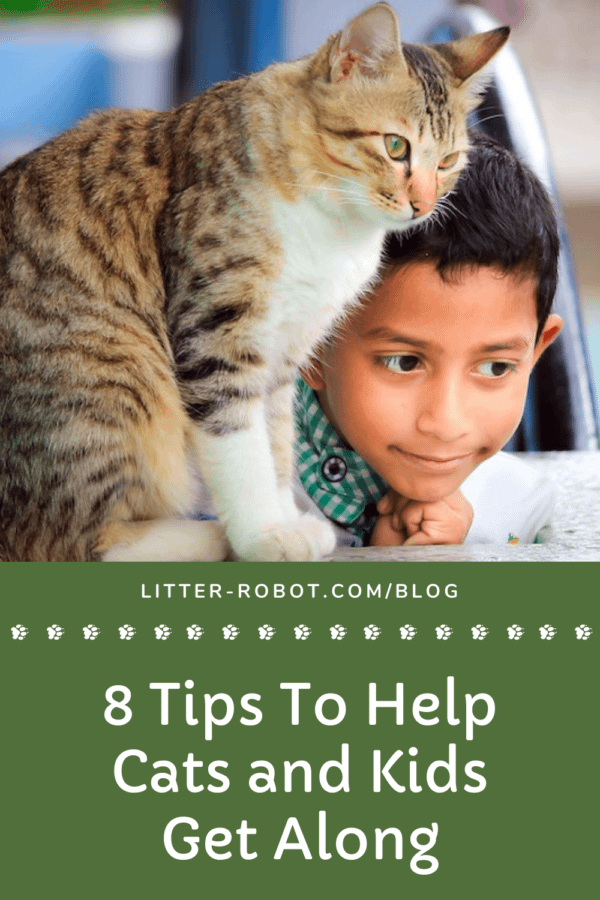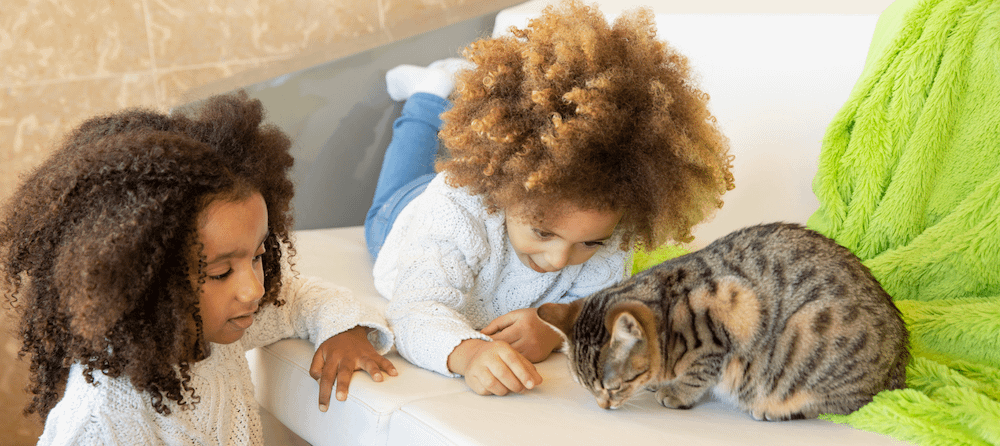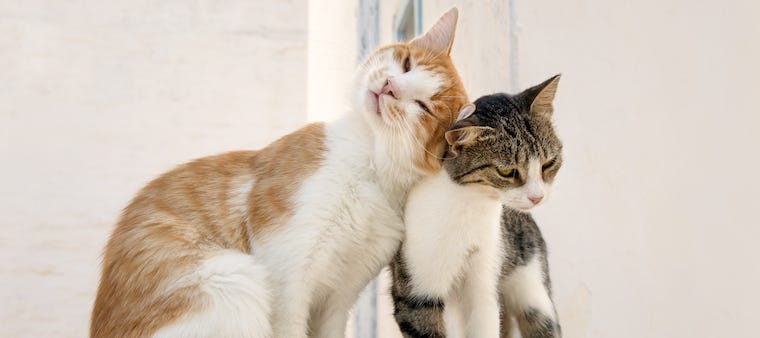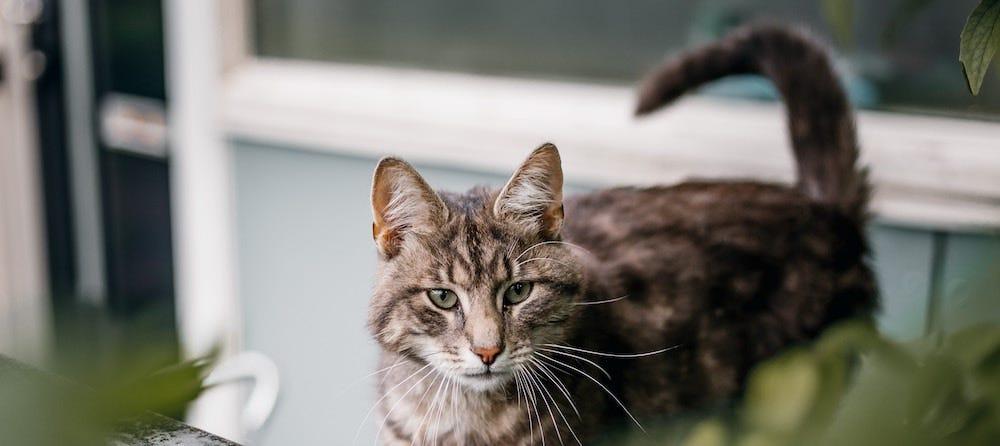With their cuddly size and playful antics, it’s a given that cats are one of the best pets for kids. But are some kitties more tolerant of children than others? We’ll take a look at the best cat breeds for kids, as well as tips to ensure your four-legged and two-legged family members get along!
Best cats for kids
The best cats for kids have the following characteristics: patience, playful energy, and a friendly demeanor. Although you will likely have a positive experience introducing kittens into your household, you may also want to consider adopting an older, calmer cat if you have very young children.
Shelter cats
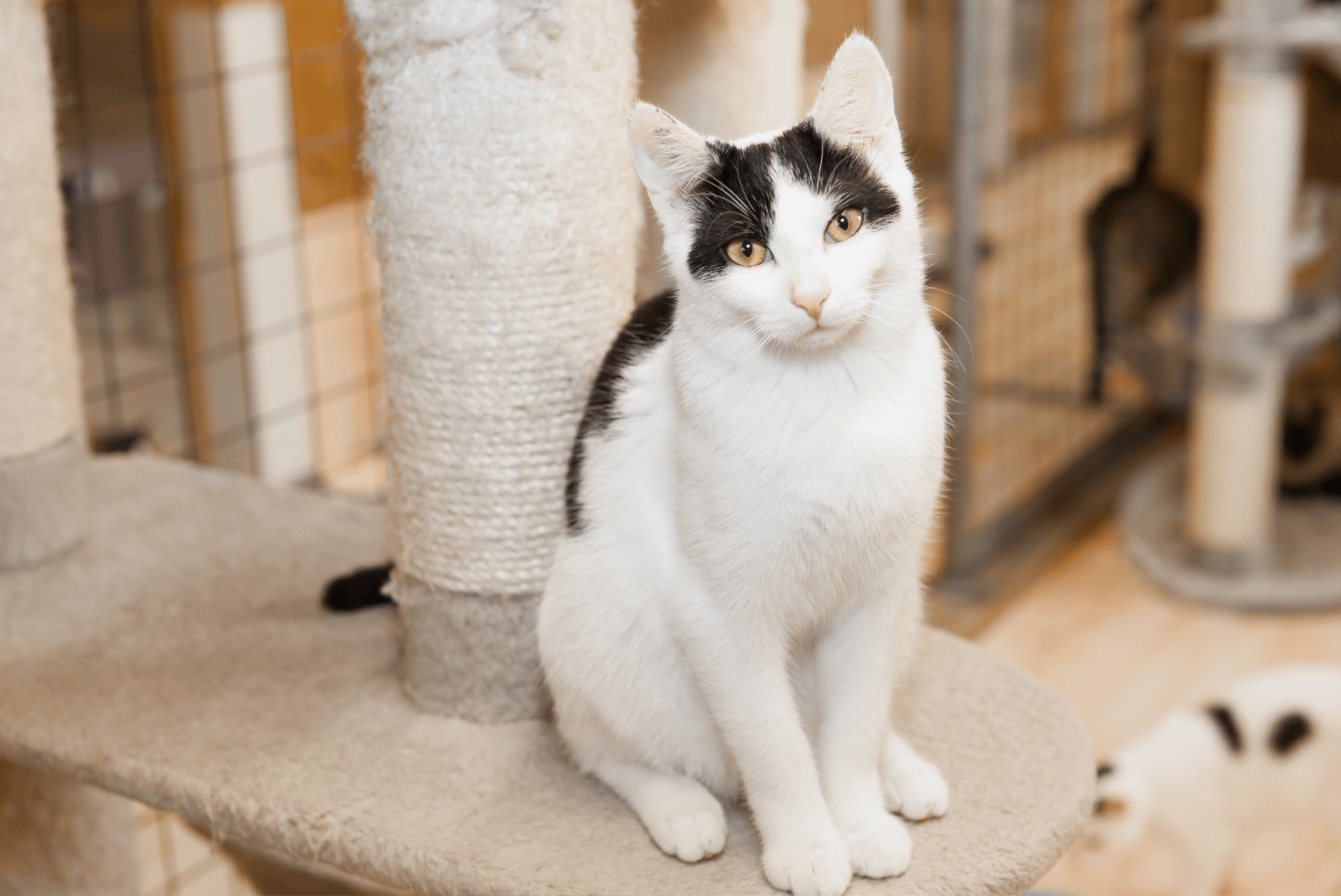
Adopting a shelter cat with the right temperament can help teach your children the value of compassion and charity. Not only are you giving kitty a second chance at life, you’re also showing that good deeds have big payoffs as your kids gain a new furry playmate! Before adopting, be sure to spend time in the shelter seeing how your children interact with the cat and talk to staff about any observed behavioral issues.
American Curl
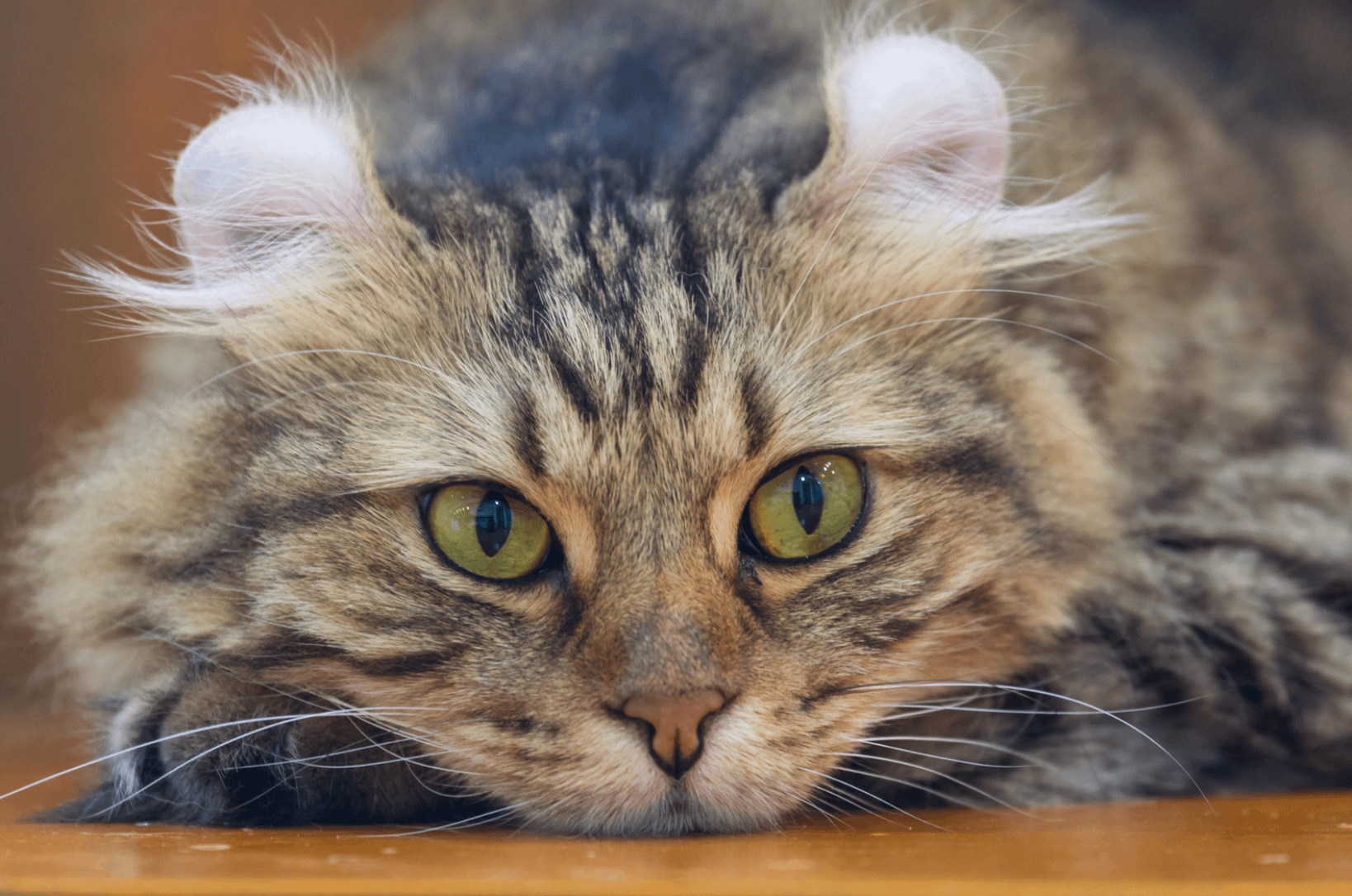
The American Curl cat, whose curled ears are the result of a genetic mutation, is lovable, friendly, and family-oriented. They like to be the center of attention with their family, taking part in all of the fun. They are very tolerant of kids, and enjoy cuddling and playtime in equal measure. If you’re looking for a cat that will become your best friend and your children’s playmate, the American Curl is the perfect breed.
Birman

The beautiful Birman cat strikes the perfect balance between loving and laid-back. What’s more, they don’t get spooked or disinterested easily—making them ideal companions for loud, playful kids. Birmans are very active family members that want to contribute and spend time with everyone. These cats are pretty easygoing and will allow children to pick them up and hold them, as long as they’re respectful.
Bombay

If your kids like to play shadow activities, the Bombay cat is the perfect little sidekick for them because, well, they’re like a second shadow! This black kitty craves company and is likely to follow around any human in the household. And because the Bombay cat is so motivated to impress their people, they are willing to learn tricks like playing fetch—a great opportunity to turn games into teachable moments for kids.
Burmese

A silly, sociable, and loving lap kitty, the Burmese cat doesn’t just pick one human to bond with and ignore the rest—they thrive in family settings. When more than one person is around to give them attention, the Burmese cat is truly in their glory. This makes them a great cat to bring into a family with children. Like the Bombay, they love to play and learn tricks, but they want you to be part of the fun.
Munchkin
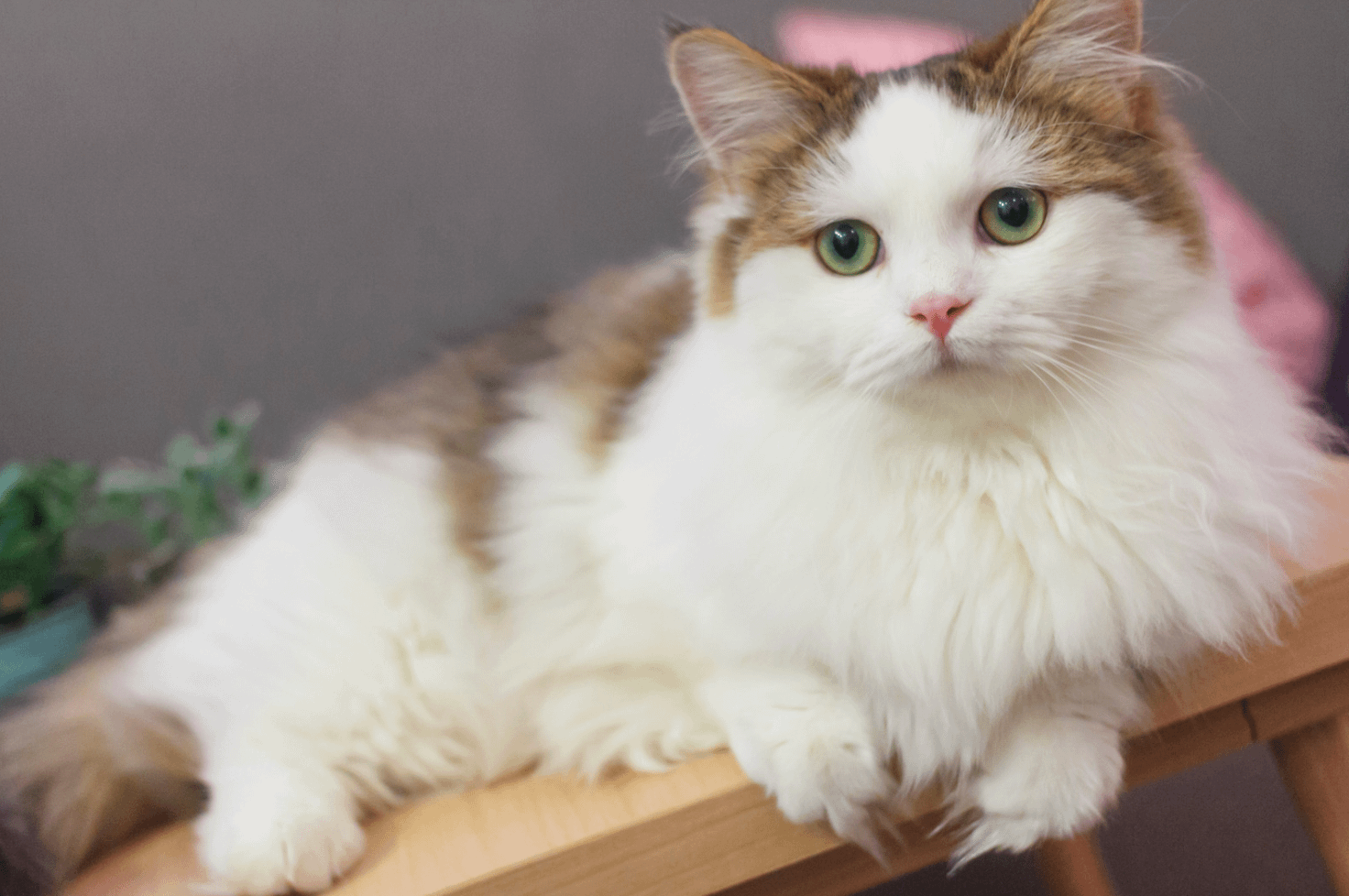
The Munchkin cat is extremely playful, affectionate, and intelligent. They may look like forever-kittens, but they are willing to learn and create habits with you. They like having a playmate, especially because they are so lively and inquisitive. These cats are amazing with children and make for great family pets. They may even influence your kids to pull pranks, as Munchkins are known to be intelligent tricksters.
Ragamuffin

The fluffy Ragamuffin cat isn’t just sought out for their looks, but for their friendliness and adaptability. They are a great family pet because they love attention and are happily tolerant of children. Ragamuffins befriend kids easily, chasing down toys and accepting respectful cuddles. These cats are gentle and relaxed, with little motivation to get into quarrels.
Ragdoll
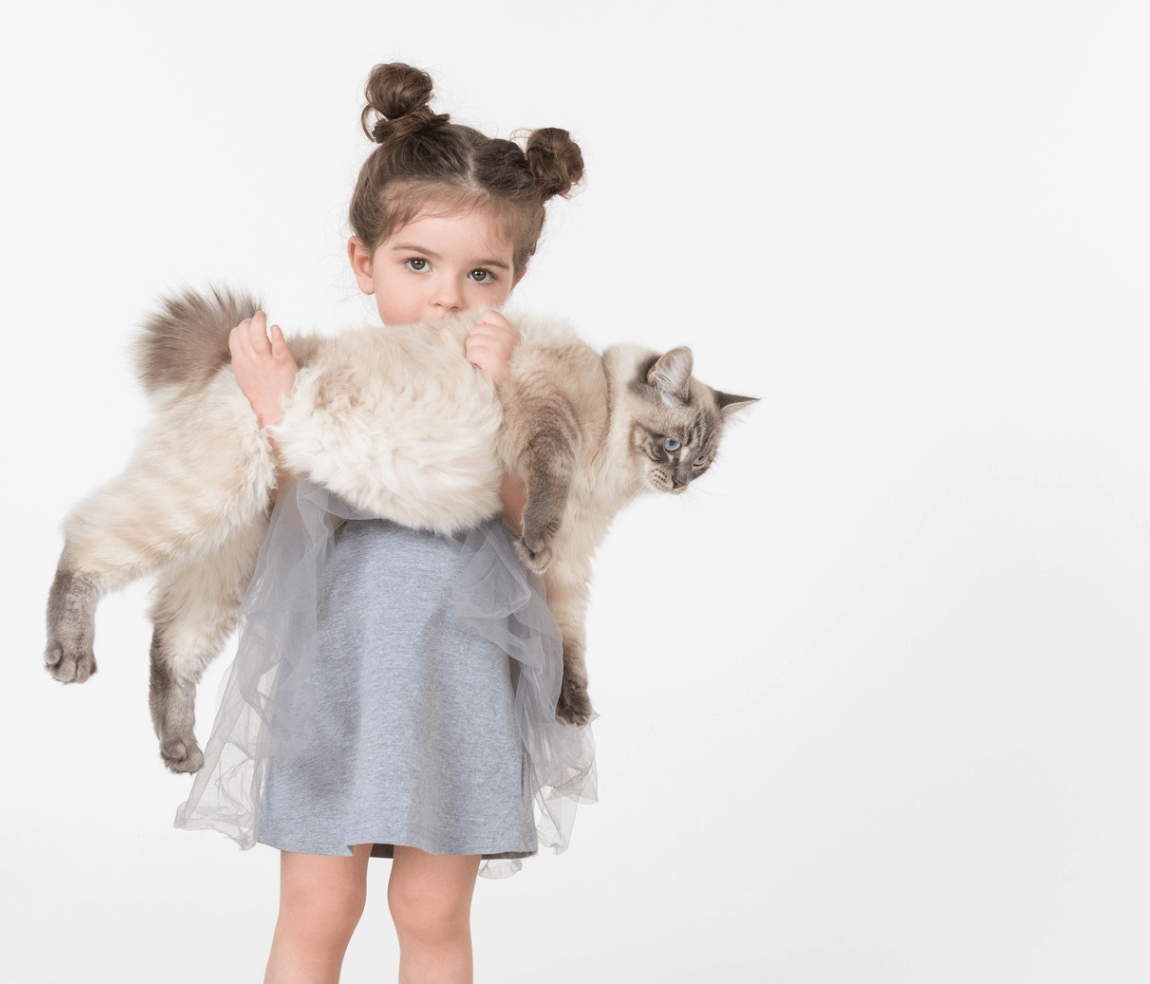
The lovable, floppy Ragdoll cat is basically a living stuffed animal. As long as children are respectful of them, this cat will be a better companion to kids than any stuffed toy could ever be. Instead of perching up high and out of reach, this breed prefers to stay on the same level as their humans—no matter how short those humans happen to be! You can’t go wrong with the highly affectionate and playful Ragdoll.
Siberian
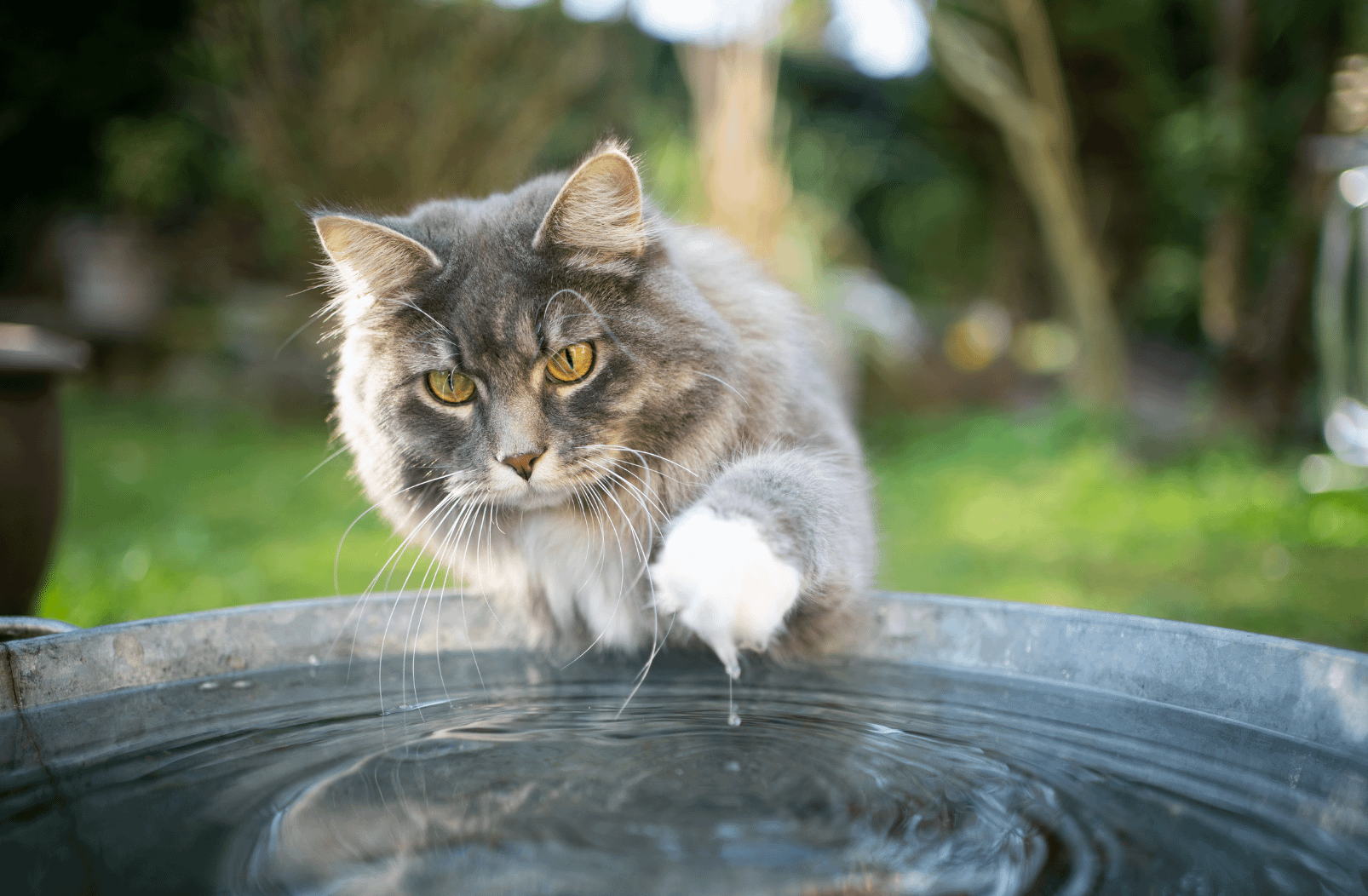
The Siberian cat is an all-around lovely family pet. They are watchers and surveyors of their space that are happy to make time for playing with children. These intelligent kitties can teach your kids a thing or two, and their presence commands respect. They are as likely to lead children on an adventure as the other way around—one that may involve water, as Siberian cats have a fondness for playing with it!
8 tips to help cats and kids get along
Now, how do you make sure that your cats and kids are playing nicely? There may be times when one or both species needs a reminder on how to interact with each other. Use these tips to help cats and kids best get along.
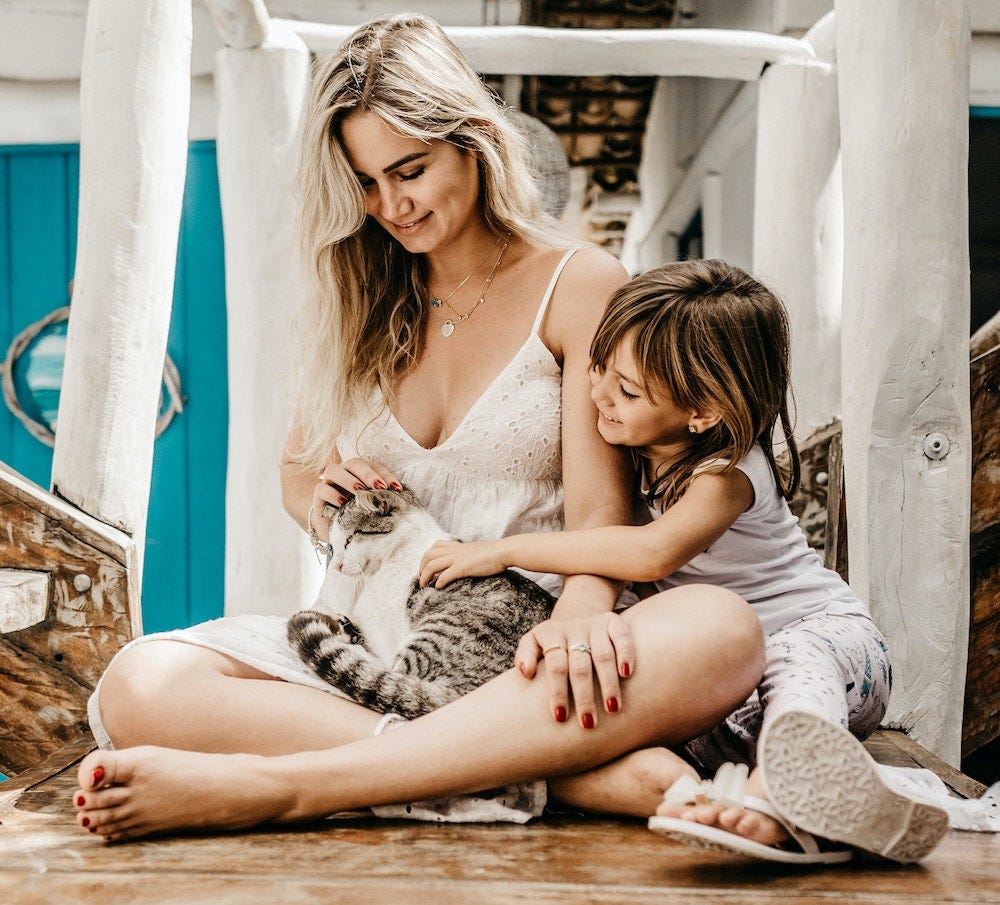
If you’re bringing home a new cat, prepare your kids
Don’t spring a cat or a kitten on your child as a birthday gift, especially if the child has never expressed interest in having a cat as a pet. Adopting a pet is not like bringing home a new toy, and you should make this distinction clear with your kids well in advance.
Discuss the responsibilities involved with raising and caring for a cat. Prepare your children for the fact that the cat may not be sociable with them at first. Emphasize the importance of being patient and allowing the kitty some space as they adjust to new surroundings.
Make slow introductions
Once you’ve brought the cat home, remind your kids not to overwhelm their new furry family member. While some cats and kittens take to children right away, others will need a little more time. It’s best to create a kid-free zone early on, such as a separate bedroom where the cat can relax and adjust until feeling more comfortable. This room should contain all the essentials, including food, water, a litter box, a cat bed, cat furniture, and toys.
Set a good example
Be sure to show (or reinforce) model behavior for your kids while interacting with cats. Show them how to respectfully pet, pick up, and hold the cat. (Remember, every cat has different preferences in this regard.) Spell out the guidelines however it makes sense for your child’s age and temperament. For example: Head scratches = good. Tail-pulling = bad. Belly rubs = attempt at your own risk!
Educate your kids on cat body language
Cats are mysterious creatures. Even as adults we sometimes can’t fathom the reason for our cat’s behavior or what their body language might represent—so we shouldn’t expect children to know. Brush up on common cat body language and tail language so you can pass on your wisdom to your kids.
- Signs of a happy, comfortable cat: Tail held high in the air with a tall, confident posture; or lying prone with belly exposed (but some kitties will never do this, no matter how comfortable!); eye contact, including “slow blinking”; rubbing the face against you and nearby objects; purring, chirping, and/or meowing.
- Signs of an aggressive cat: Ears pinned backward on the head; dilated pupils; an arched back; a fluffed tail held straight up or a tail that is lashing from side to side; whiskers held out to the side; hissing or growling.
- Signs of a fearful or pained cat: Ears pinned back and held outward; dilated pupils; lying down with the tail tucked underneath or close to the body, or tail held low to the ground; whiskers flattened against the face; hissing or growling; sometimes purring may accompany fear or pain; hiding.
- Signs of a playful cat: Tail curved like a question mark or twitching/swishing from side to side; running and jumping; purring, chirping, and/or meowing.
Supervise interactions for a while
So, you’ve set a good example for your kids and discussed what to watch with cat body language. Early on, it’s still important to supervise interactions between cats and kids. Observe a play session between them so you can provide verbal encouragement—or warnings—for your child. If one or both parties is playing too rough or playing inappropriately (for example, if your child is trying to dress the cat up like a doll), you can separate them and try again later.
Keep your cat’s nails trimmed
A child who is roughhousing with a cat will likely come away with a scratch or two. Hopefully this will discourage any rough play moving forward—but to be safe, make sure your cat’s nails are trimmed at least every 3-4 weeks. The less time you wait between nail trimmings, the duller the scratches will be! Be sure to clean and disinfect cat scratches. Do not declaw. Provide your cat with multiple scratching outlets, such as cat furniture with sisal scratch pads.
Maintain a routine
Cats and kids both appreciate stable routines. Set a consistent feeding and napping schedule. (Let’s be honest, it’s always nap time for cats!) Scoop the litter box daily. (Or buy a self-cleaning litter box.) Make time to play with both your cats and kids every day—with and without the other one around.
Encourage responsibility – but don’t put it all on your kids
Cats are great pets for teaching your kids responsibility, as it is relatively easy to meet their daily essential needs: food, fresh water, and a clean litter box. However, a child under the age of 13 (or older, in some cases) should not be left entirely in charge of caring for a cat. Instead, give your child one daily task or a couple weekly tasks related to the cat. Make sure you monitor the situation daily. It is unfair (and potentially dangerous) for your cat to go without food, water, or a clean litter box because all the burden was placed on a child.
Keep these tips in mind when helping your cats and kids get along. Usually, you’ll find that with a little time, patience, and respectful space, cats and kids can become the best of friends! If problems persist, talk with your veterinarian or seek out an animal behaviorist for expert guidance.
Source: Cat Behavior Associates
Photo by Jonathan Borba on Unsplash
